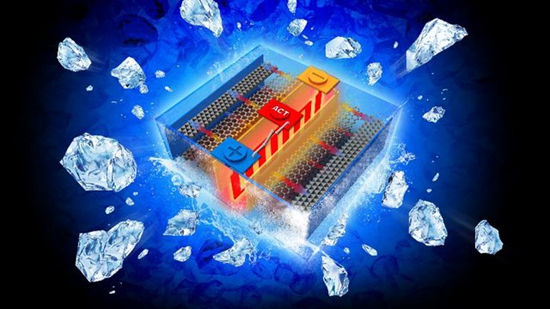What is the history of lithium batteries?
The purchasing pace at the demand end of the international thermal coal market continues to slow down and the international thermal coal price continues to decline. Prices for thermal coal at major international ports continued to fall last week as buyers in Europe slowed in recent days for April, coupled with weaker-than-expected import demand from End users in China. According to China Coal Market net monitoring: Australia Newcastle port thermal coal price index was 253 USD/ton, compared with 309.02 USD/ton, down 56.02 USD/ton, down 18.13%. South Africa's Port Richards thermal coal price Index was $264.5 / mt, down the US $62.72 / mt or 19.17% from US $327.22 / mt. The European ARA Tri-port thermal coal price Index was $281.8 / ton. Does the price of thermal coal in major international ports continue to decline to affect the price of the Lithium Batteries?
Early R&D of Lithium Batteries
Lithium batteries were first used in pacemakers. Lithium-ion batteries have the advantages of extremely low self-discharge rate and flat discharge voltage, so that the pacemaker implanted in the human body can operate for a long time without recharging. Lithium batteries generally have a nominal voltage higher than 3.0 volts and are more suitable for integrated circuit power supplies. Manganese dioxide batteries are widely used in calculators, digital cameras, and watches.
In order to develop varieties with better performance, various materials have been researched, resulting in unprecedented products.
In 1992, Sony successfully developed lithium-ion batteries. Its practical application greatly reduces the weight and volume of portable electronic devices such as mobile phones, notebooks, and calculators.
What is the development process of lithium batteries?
In 1970, M.S. Whittingham of Exxon used titanium sulfide as the positive electrode material and metal lithium as the negative electrode material to make the first lithium battery.
In 1980, J. Goodenough discovered that lithium cobalt oxide can be used as a cathode material for lithium-ion batteries.
In 1982, R.R. Agarwal and J.R. Selman of the Illinois Institute of Technology discovered that lithium ions have the property of intercalating graphite, a process that is fast and reversible. At the same time, the safety hazards of lithium batteries made of metal lithium have attracted much attention. Therefore, people have tried to use the characteristics of lithium ions embedded in graphite to make rechargeable batteries. The first usable lithium-ion graphite electrode was successfully trial-produced at Bell Laboratories.
In 1983, M. Thackeray, J. Goodenough and others found that manganese spinel is an excellent cathode material with low price, stability and excellent conductivity and lithium conductivity. Its decomposition temperature is high, and its oxidizing property is much lower than that of lithium cobalt oxide. Even if there is a short circuit or overcharge, it can avoid the danger of burning and explosion.
In 1989, A.Manthiram and J.Goodenough found that a positive electrode with a polymeric anion would produce a higher voltage.
In 1991, Sony Corporation released the first commercial lithium-ion battery. Subsequently, lithium-ion batteries revolutionized the face of consumer electronics.

In 1996, Padhi and Goodenough found that phosphates with an olivine structure, such as lithium iron phosphate (LiFePO4), are more superior than traditional cathode materials, so they have become the current mainstream cathode materials.
With the widespread use of digital products such as mobile phones and notebook computers, lithium-ion batteries are widely used in such products with excellent performance, and are gradually developing into other product application fields.
In 1998, Tianjin Power Research Institute began commercial production of lithium-ion batteries.
On July 15, 2018, it was learned from Keda Coal Chemistry Research Institute that a special carbon anode material for high-capacity and high-density lithium batteries with pure carbon as the main component came out in the institute. The cruising range of the car can exceed 600 kilometers.
In October 2018, the research group of Professor Liang Jiajie and Chen Yongsheng of Nankai University and the research group of Lai Chao of Jiangsu Normal University successfully prepared a silver nanowire-graphene three-dimensional porous carrier with a multi-level structure, and supported metal lithium as a composite anode material. This carrier can inhibit the formation of lithium dendrites, thereby enabling ultra-high-speed charging of batteries, which is expected to significantly extend the "lifetime" of lithium batteries.
High quality lithium batteries supplier
Luoyang Moon & Star New Energy Technology Co., LTD, founded on October 17, 2008, is a high-tech enterprise committed to the research and development, production, processing, sales and technical services of lithium ion battery anode materials. After more than 10 years of development, the company has gradually developed into a diversified product structure with natural graphite, artificial graphite, composite graphite, intermediate phase and other negative materials (silicon carbon materials, etc.). The products are widely used in high-end lithium ion digital, power and energy storage batteries.If you are looking for Lithium battery anode material,click on the needed products and send us an inquiry:sales@graphite-corp.com
Gas supplies have been in short supply because of the conflict between Russia and Ukraine. Combined with the situation that other renewable sources cannot produce enough electricity, electricity prices have soared in many parts all over the world. For this reason, I assume the supply and prices of the Lithium Batteries would keep being influenced by the high energy prices.
Inquiry us
PREVIOUS NEWS
Properties and Applications of Ti6Al4V TC4 Powder
NEXT NEWS